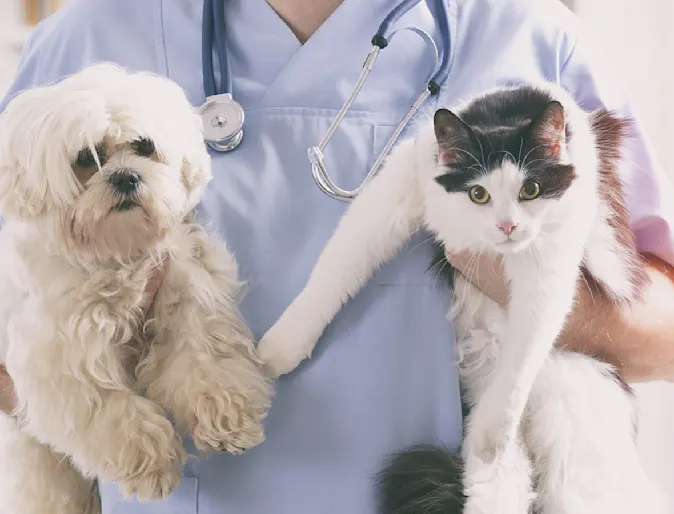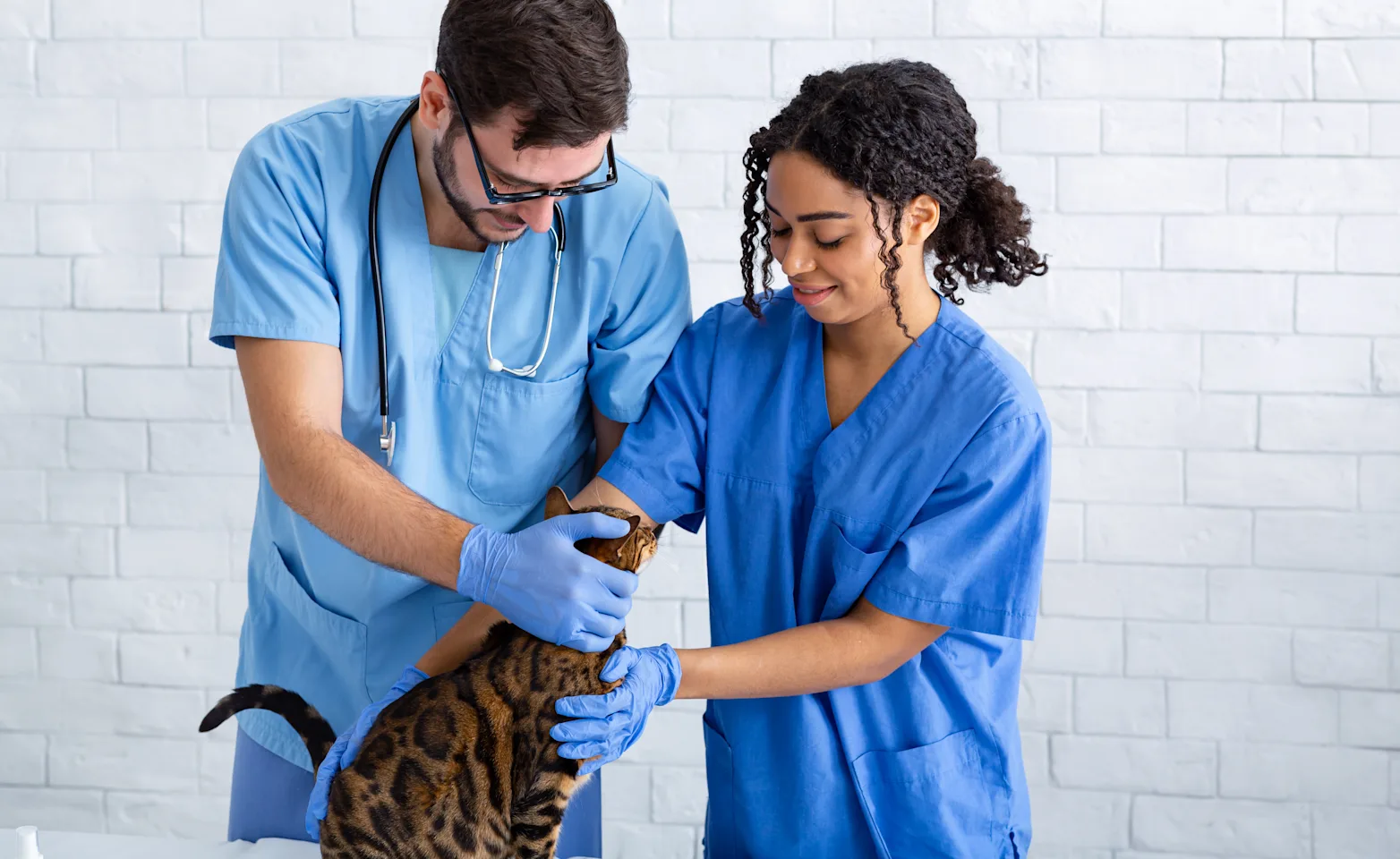Inside Look at How a 24 hour vet bellingham Handles Emergencies with Care
Inside Look at How a 24 hour vet bellingham Handles Emergencies with Care
Blog Article
All About Veterinarian Surgical Treatment: Recognizing the Importance of Expert Look After Your Pets
Vet surgical procedure is a vital element of pet dog medical care. It incorporates numerous treatments, from routine optional surgeries to immediate interventions. Understanding the ins and outs of these surgeries can aid pet owners make educated choices. The prep work, execution, and recovery phases are necessary for ensuring the wellness of pets. With appropriate understanding, proprietors can navigate the intricacies of veterinary treatment. What variables should be considered before a pet dog undergoes surgical treatment?
Sorts Of Veterinarian Surgeries
When an animal requires surgical treatment, understanding the different sorts of vet surgical treatments can assist pet owners make informed decisions. Veterinary surgical treatments can be generally classified into three main kinds: elective, urgent, and emergency situation surgical procedures. Elective surgical procedures, such as spaying or neutering, are prepared treatments that are not immediately serious. Immediate surgical treatments, like those for international body elimination, must be carried out soon however are not life-threatening in the moment. Emergency surgical procedures, such as those resolving serious injury or internal bleeding, are vital and require instant attention.Additionally, surgical procedures can vary in intricacy, ranging from minimally invasive laparoscopic treatments to a lot more substantial open surgeries. Each sort of surgical treatment lugs its own dangers and healing procedures. Comprehending these classifications allows family pet proprietors to engage in purposeful conversations with veterinarians, bring about better outcomes for their cherished pet dogs.
Preparing for Your Pet's Surgery
Preparing for a pet dog's surgical procedure entails a comprehensive checklist to ensure all fundamentals are covered. Effective interaction with the veterinarian is important for recognizing the procedure and any kind of needed pre-operative steps - emergency vet bellingham. Furthermore, having clear post-operative care guidelines will assist proprietors supply the most effective assistance for their recovering animals
Pre-Surgery Checklist Essentials
Ensuring a smooth medical experience for an animal calls for cautious preparation and focus to information. A pre-surgery list is vital for pet dog proprietors to follow. Initially, confirming the scheduled surgical treatment date and time is crucial. Owners must likewise validate that their pet has fasted according to the veterinarian's guidelines, commonly for 8-12 hours before surgical treatment. Collecting required clinical documents, consisting of inoculation history, is necessary for the vet's evaluation. It is additionally recommended to prepare a comfortable space at home for the pet dog's recovery after surgical treatment. Ultimately, proprietors need to have a strategy for transport to and from the vet facility, making certain that the pet dog is protected and comfy throughout the journey. Following these steps can significantly enhance the medical experience.
Communicating With Your Veterinarian

Efficient communication with the veterinarian is essential for an effective medical experience for family pets. Owners need to be prepared to discuss their animal's case history, including any kind of pre-existing problems, medications, and allergies. This info aids the veterinarian examine risks and tailor the surgical plan appropriately. Additionally, pet dog proprietors should ask questions relating to the procedure, anesthesia, and expected outcomes to guarantee they totally comprehend the process. Clearing up any questions can reduce stress and anxiety for both the pet and the owner. It is additionally essential to interact any kind of behavior adjustments or worries observed in the pet dog leading up to the surgical procedure. Inevitably, clear dialogue cultivates trust fund and collaboration, ensuring that family pets obtain the best possible treatment during their surgical journey.
Post-Operative Treatment Directions
After talking about the procedure with the veterinarian, animal proprietors ought to concentrate on post-operative treatment guidelines to facilitate a smooth recuperation for their pet dogs. These instructions typically consist of monitoring the medical site for signs of infection, such as soreness or discharge. Family pets may require to be kept one's cool and constrained to avoid excessive movement that could interrupt healing. Discomfort monitoring is vital, so proprietors ought to follow the veterinarian's assistance on providing medicines. Furthermore, dietary limitations may be encouraged to prevent gastrointestinal upset. Routine follow-up appointments are essential to ensure correct recovery and resolve any type of worries. By sticking to these post-operative treatment directions, pet dog proprietors can considerably add to their family pet's recovery and general health.
The Surgical Process Explained
The surgery for family pets encompasses vital actions that ensure their safety and security and recovery. Pre-surgery preparations are essential for minimizing risks, while post-operative care guidelines play an essential function in advertising recovery. Recognizing these elements helps pet owners browse the medical experience better.
Pre-Surgery Preparations
Before a pet undertakes surgical procedure, numerous important preparations must happen to ensure a safe and successful treatment. Initially, a complete veterinary evaluation is necessary to analyze the go to my blog pet dog's overall health and wellness and determine any type of potential risks. This might consist of blood examinations, imaging, or other diagnostics. The vet will also discuss anesthesia choices tailored to the pet's specific requirements. In addition, emergency pet services family pet owners are usually instructed to keep food and water for a defined time before surgery to minimize the risk of issues throughout anesthetic. It is necessary for proprietors to offer a full case history, including any kind of medications or allergies, guaranteeing the medical group has all necessary details. Appropriate communication and adherence to pre-surgery guidelines can considerably boost the end result of the procedure.
Post-Operative Care Guidelines
Appropriate post-operative treatment is crucial for making certain a pet's healing adhering to surgical procedure. After the treatment, pets must be monitored very closely for any indications of complications, such as extreme bleeding, swelling, or unusual habits. It is very important to adhere to the vet's guidelines pertaining to medicines, consisting of painkiller and antibiotics. Family pets must be kept in a peaceful, comfy atmosphere to minimize tension and promote recovery. Limiting task is vital; short, leashed walks may be required, but jumping or running need to be stayed clear of. Routine follow-up visits ought to be scheduled to evaluate the recovery process. Additionally, the medical site should be maintained clean and completely dry, with any type of signs of infection reported to a veterinarian without delay. Adhering to these guidelines enhances healing outcomes.
Anesthetic and Pain Administration
Effective anesthesia and discomfort administration are vital parts of vet surgical treatment, guaranteeing that animals stay comfortable and secure throughout the procedure. Vets evaluate each pet's individual demands, taking into account factors such as age, weight, health status, and the type of surgery being performed.Anesthesia protocols commonly consist of a mix of pre-anesthetic medicines, induction agents, and inhalant anesthetics, allowing for accurate control over the pet's degree that site of awareness. Surveillance during surgical treatment is crucial; vets constantly observe vital indications to deal with any type of possible issues promptly.Pain management approaches may entail opioids, non-steroidal anti-inflammatory medicines (NSAIDs), and anesthetics, tailored to the animal's particular situation. This complex technique helps decrease pain and promotes a smoother surgical experience. By prioritizing effective anesthetic and discomfort monitoring, vet professionals enhance the total welfare of pet dogs going through medical procedures, ensuring they receive the highest criterion of care.
Post-Operative Treatment and Healing
Adhering to surgery, the emphasis shifts to post-operative treatment and recovery, which is essential for making certain a pet dog's safe return to regular activities. During this period, pet dogs call for a silent, comfortable environment to help healing. Owners need to carefully check their pets for any signs of pain or uncommon behavior.Veterinary guidelines often include certain guidelines connected to medication administration, wound treatment, and nutritional changes. It is vital to abide by these referrals to decrease difficulties and promote healing. Pets might require to be restricted from vigorous tasks, such as running or leaping, throughout their recovery period (24 hour vet bellingham).Regular follow-up consultations with the veterinarian permit tracking of the pet's progress and prompt modifications to the care strategy. Providing psychological support and companionship can likewise improve a pet dog's healing experience, helping to minimize anxiety and anxiousness. On the whole, attentive post-operative treatment plays a significant duty in attaining an effective recovery
Acknowledging Complications After Surgery
How can pet proprietors determine difficulties after surgical treatment? Understanding of specific signs is essential for making certain the well-being of animals during healing. Common indicators consist of excessive swelling, soreness, or discharge at the medical site, which might indicate infection. Additionally, relentless pain, suggested by whimpering or unwillingness to relocate, need to prompt instant focus. Changes in appetite or water consumption can additionally suggest difficulties; a reduction in these behaviors might indicate discomfort or distress.Moreover, animal owners ought to monitor their family pets for any kind of unusual habits, such as lethargy or difficulty breathing, as these can be signs of serious concerns. Vomiting or looseness of the bowels following surgical treatment might require urgent vet analysis. Recognizing these complications early can considerably impact an animal's recuperation process, highlighting the relevance of vigilance and punctual interaction with a veterinarian for any kind of worrying signs and symptoms.
The Role of Vet Experts in Surgical Treatment
Vet specialists play an important role in ensuring the security and success of surgeries for family pets, especially complying with surgical treatment when keeping an eye on and treatment are paramount. These professionals consist of veterinarians, veterinary professionals, and assistance team, every one of whom add specialized abilities to the surgical process.Before surgical procedure, vets perform comprehensive evaluations to assess the family pet's health, making sure that any kind of underlying problems are handled. During the treatment, the medical team offers anesthesia, preserves sterile environments, and keeps track of essential indicators, very important for minimizing risks.Post-operative treatment is equally substantial; veterinary specialists observe for complications, take care of discomfort, and guide proprietors on healing techniques. Their competence enables them to acknowledge very early indicators of distress or infection, guaranteeing timely intervention. Ultimately, the collective efforts of vet professionals in surgical treatment promote a safe atmosphere, promoting the wellness of pets throughout the surgical trip.

Frequently Asked Questions
Just how Do I Pick the Right Vet Specialist for My Pet?
Choosing the appropriate vet cosmetic surgeon entails looking into qualifications, reading evaluations, and examining the clinic's atmosphere. It is necessary to reflect on the cosmetic surgeon's experience with particular treatments and their communication design when making a choice.
What Prevail Misconceptions About Veterinarian Surgeries?
Typical false impressions concerning vet surgical procedures include ideas that they are constantly dangerous, unneeded, or for emergencies. Several animal owners take too lightly the benefits of precautionary treatments and the skill associated with veterinary surgical care.
Just How Much Will My Pet dog's Surgical procedure Expense?
The price of a family pet's surgical treatment can differ considerably based upon factors such as the kind of treatment, the vet's experience, and geographical place (tplo surgery for dogs). Normally, expenses vary from a few hundred to several thousand bucks

Can My Family Pet Consume Prior To Surgery?
Prior to surgical treatment, it is normally suggested that animals avoid eating for a specific duration. This fasting helps in reducing the threat of complications during anesthesia. Proprietors need to consult their vet for precise directions tailored to their pet dog's demands.
Suppose My Animal Has Pre-Existing Health And Wellness Conditions?
When a pet has pre-existing health and wellness problems, it's essential for the vet to examine these factors prior to surgical procedure. This analysis assurances suitable safety measures are taken, reducing risks and maximizing the pet's general safety and security during the procedure.
Report this page